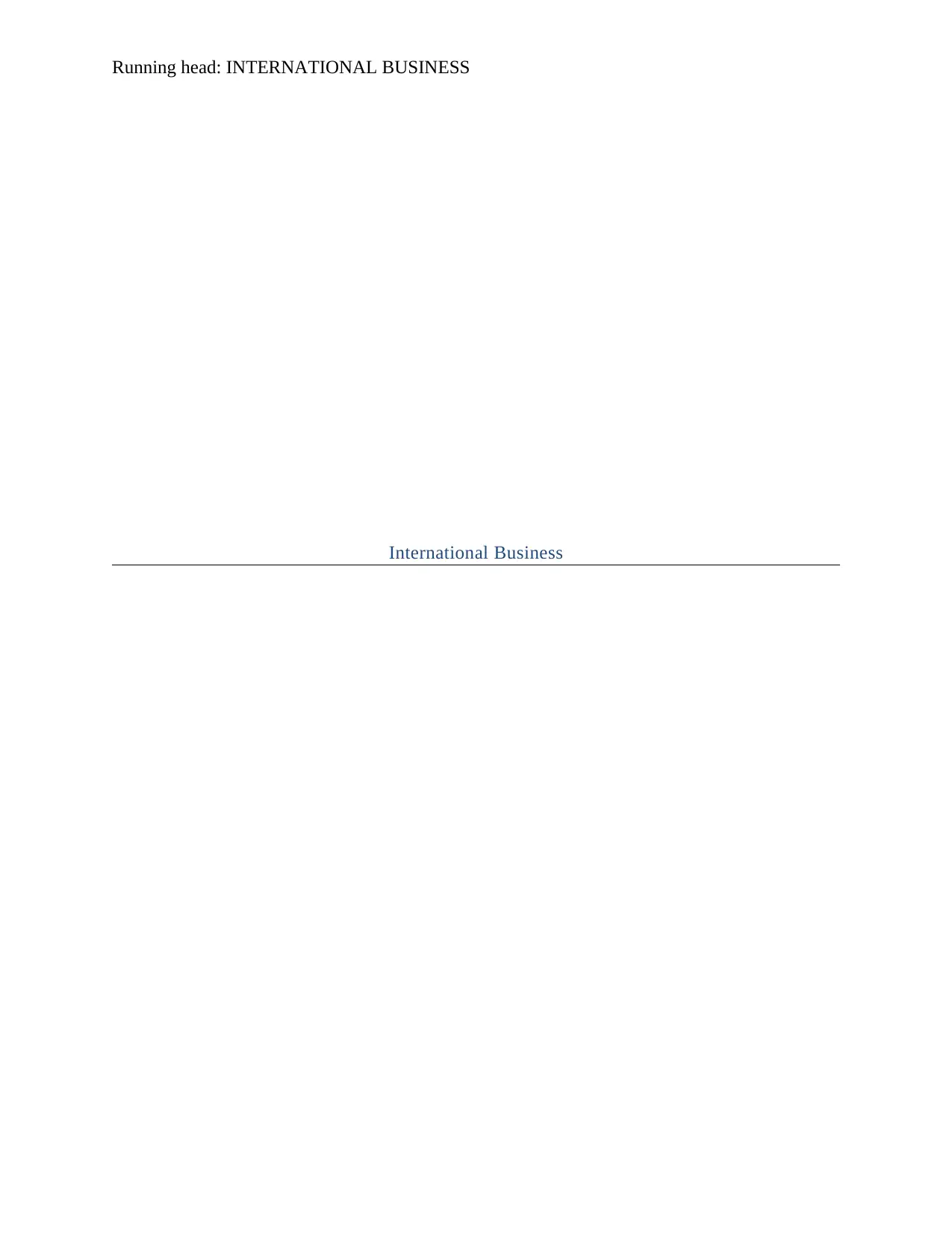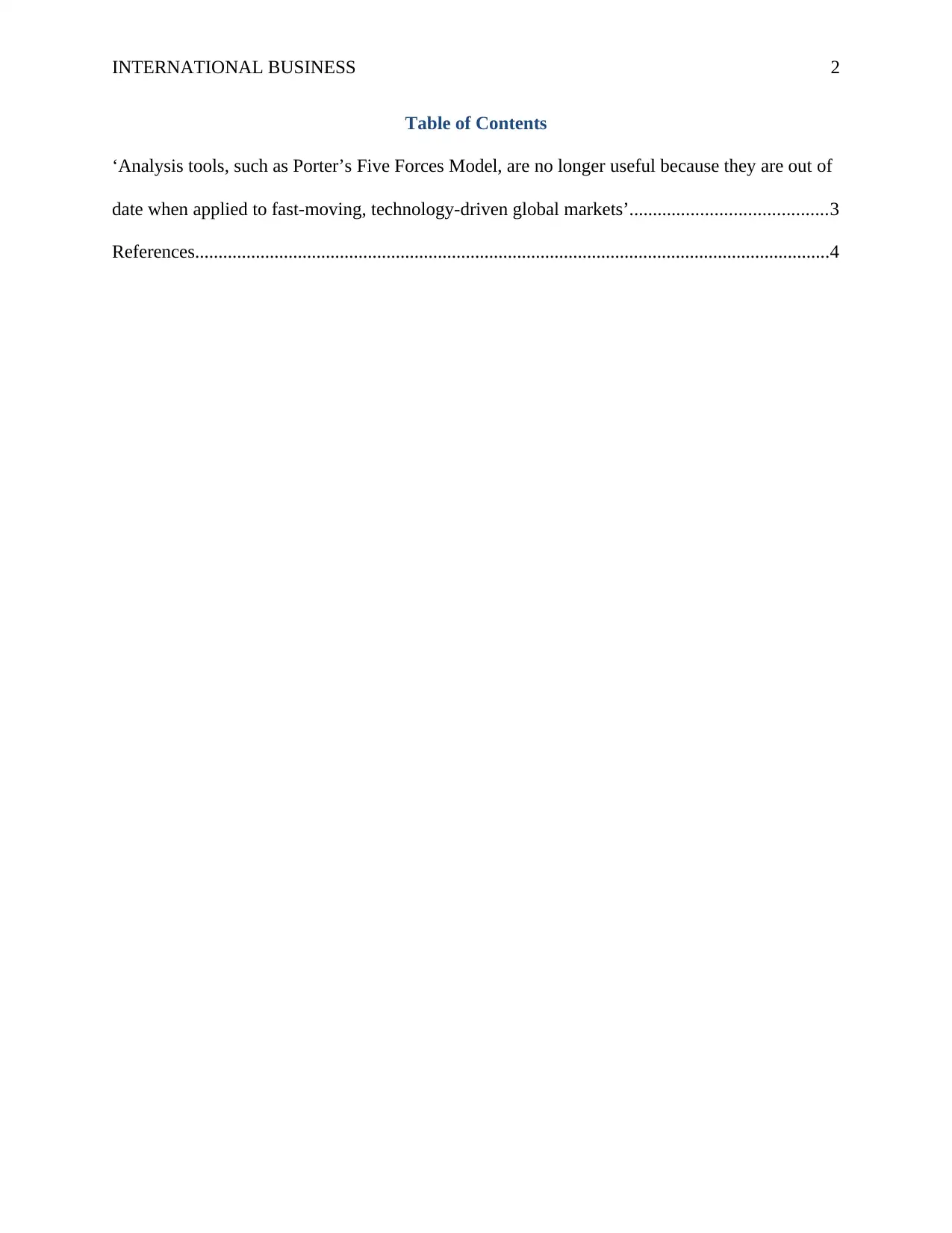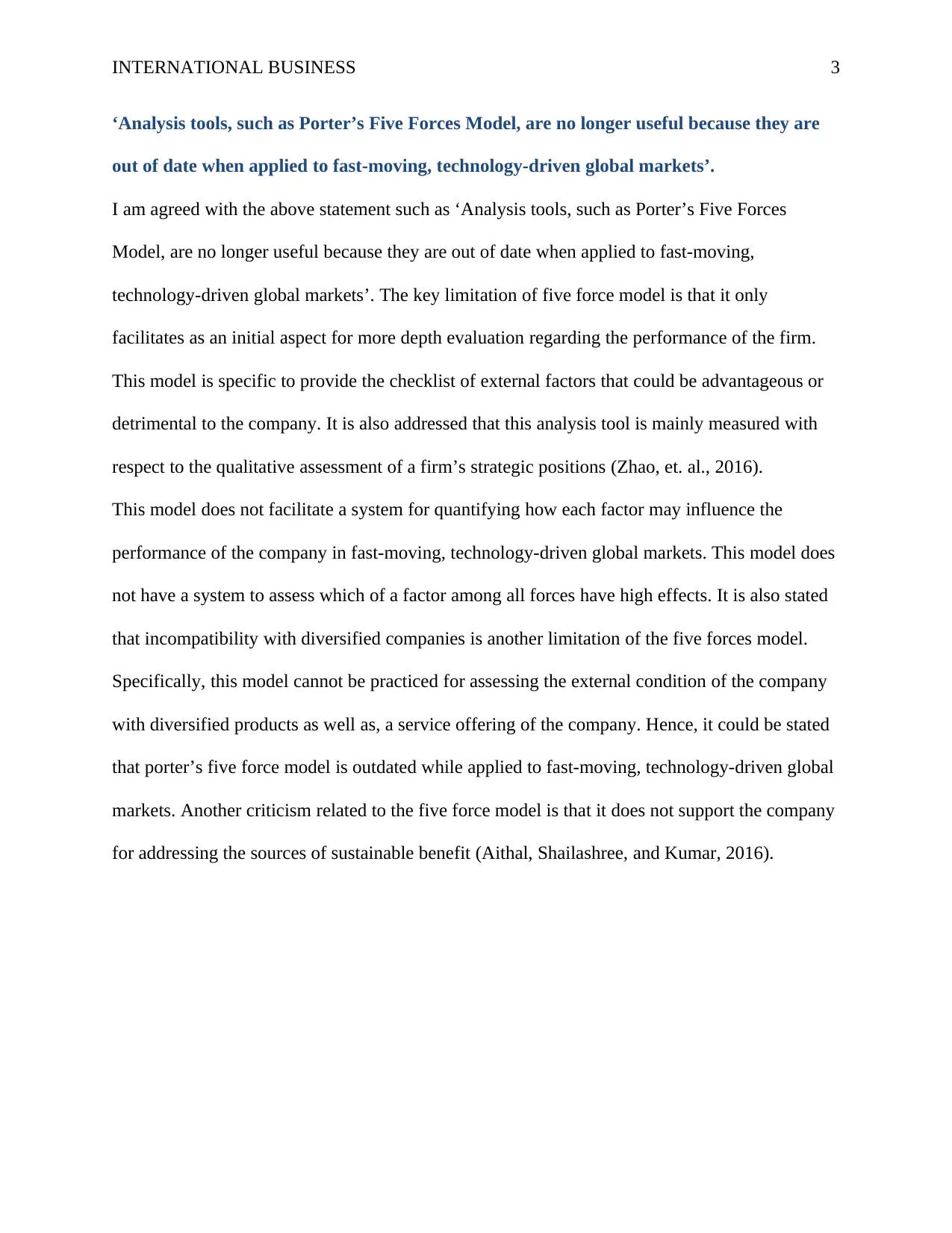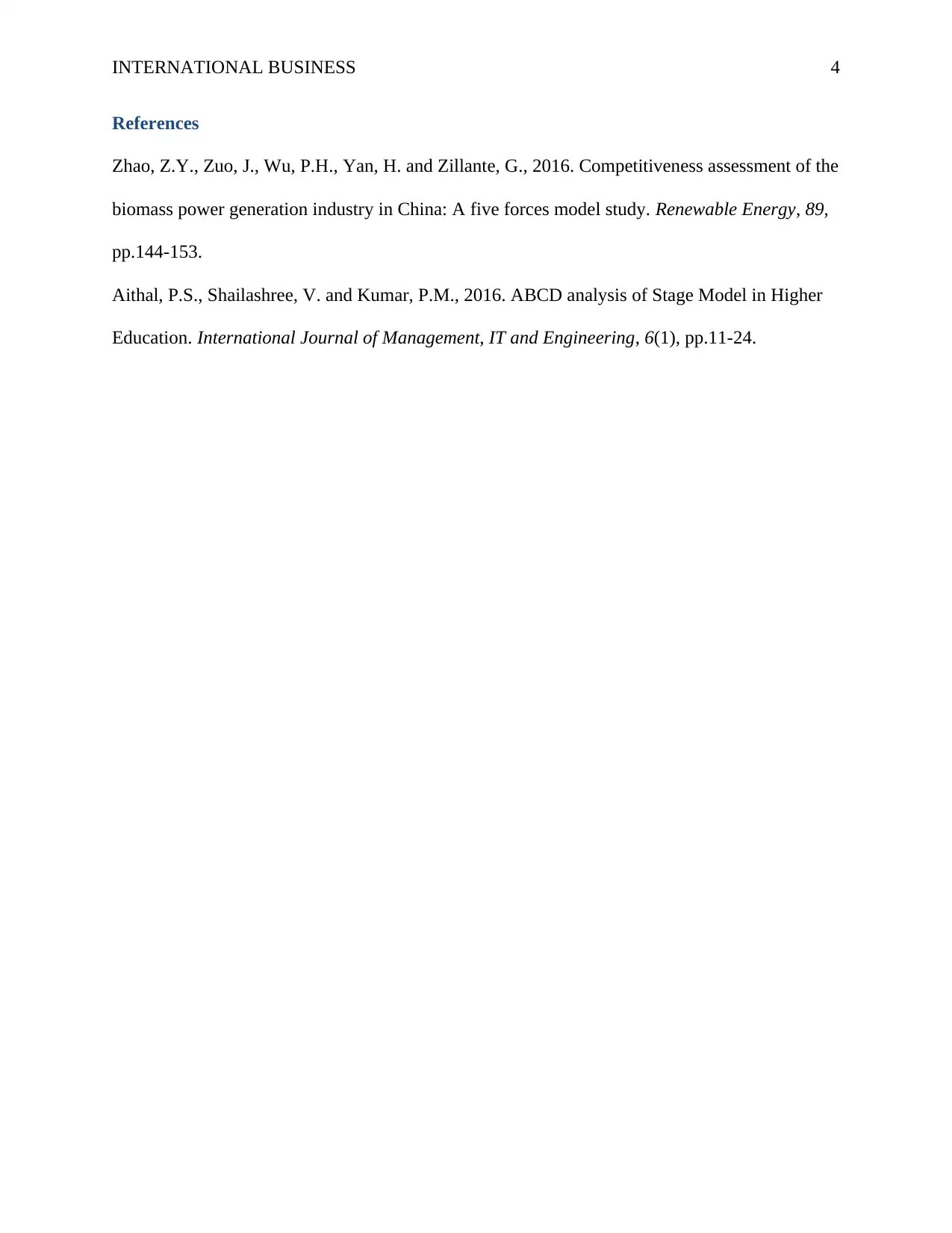Evaluating Porter's Five Forces Model in Technology-Driven Markets
VerifiedAdded on 2022/11/19
|4
|444
|57
Discussion Board Post
AI Summary
This discussion post critically assesses the statement that Porter's Five Forces Model is outdated for fast-moving, technology-driven global markets. The author agrees with the statement, arguing that the model's limitations include its qualitative nature, lack of quantification of factor influence, incompatibility with diversified companies, and failure to address sources of sustainable benefit. The post references academic sources to support its claims, highlighting the model's limited applicability in contemporary global markets. Desklib offers a platform for students to access similar solved assignments and resources.
1 out of 4











![[object Object]](/_next/static/media/star-bottom.7253800d.svg)